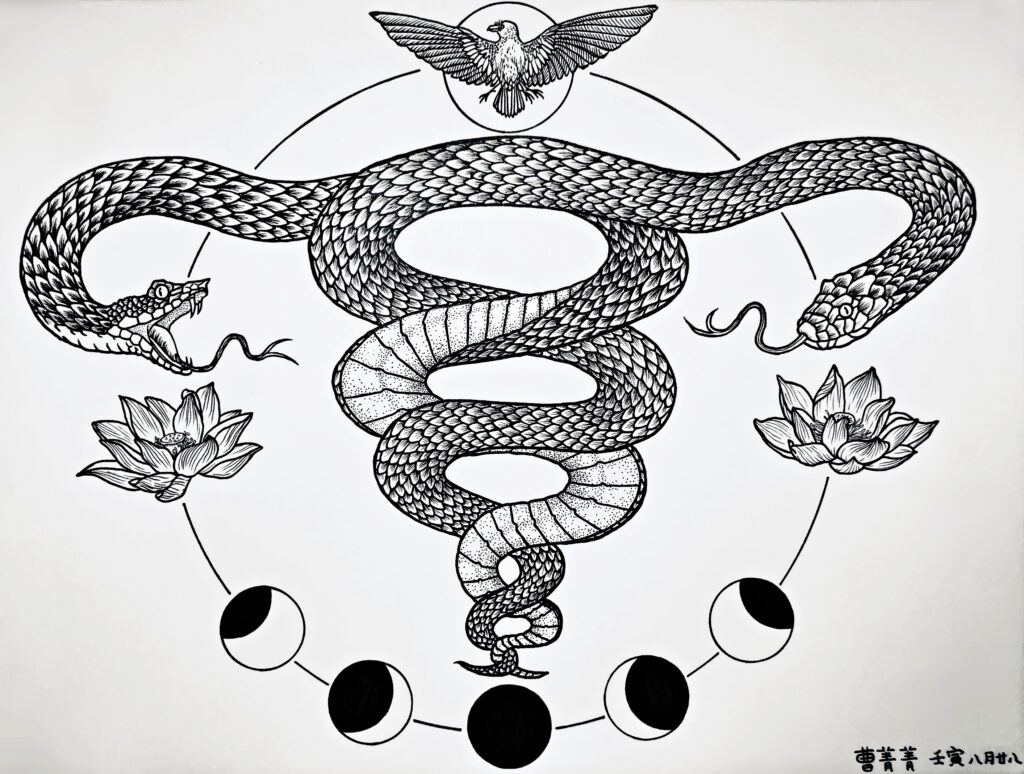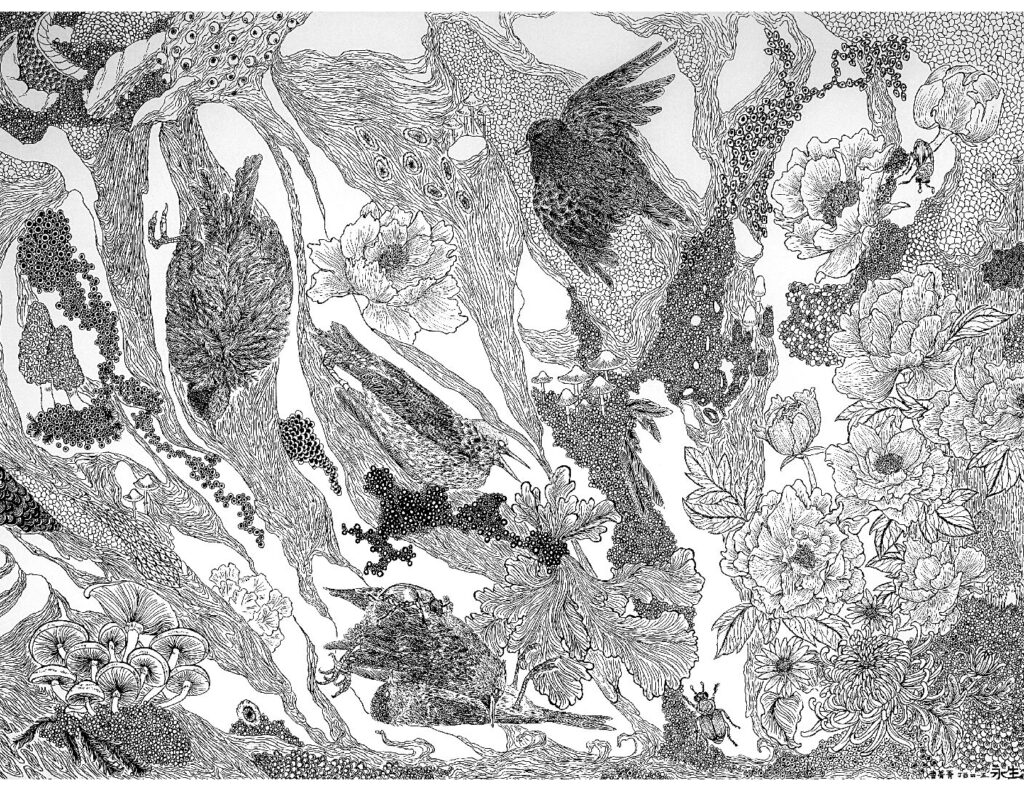
Diabetic Nephropathy:
This ball-pen drawing illustrates diabetic nephropathy featuring Kimmelstiel-Wilson lesions, thickened basement membrane of Bowman’s Capsules, thickened tubular membranes, and arteriolar hyalinosis. I did this drawing after caring for a patient with end renal disease caused by diabetes while I was on my psychiatry rotation. Our team was consulted due to suicidal ideation. As medical students, before we start our rotation, all we learned about diseases/ disorders were their pathophysiology presented as affectionless, academic explanations in textbooks. As I am halfway through the rotation and interacting with patients and their families, I’ve seen a different aspect of medicine— the human side. Mastering both the science and art of medicine is essential for developing therapeutic physician-patient relationships. As medical students and future physicians, we need to remember: as we sharpen our brainpower we should never neglect to strengthen our own judgment, listening skills, and open-mindedness.

NuWa, FuXi, Caduceus and Uterus:
This is a drawing for those who possess a uterus and those willing to advocate for the uterus’s fertility freedom. The idea of intertwined snakes came from the Chinese mythology of Nu Wa, the creator of mankind, and her husband, Fu Xi. I positioned them to shape like a uterus. The tripedal crow at the top symbolizes the sun in Chinese mythology; here I use it to represent light and hope. Together the three creatures form the staff of Hermes. Lotus flowers symbolize fertility in China and in many other civilizations as well. The lunar eclipse at the bottom represents menstruation.
By combining these elements, I want to convey the importance of medicine and healthcare professionals in fighting for reproductive and bodily freedom. I believe it is medically unethical to view necessary abortion care as unethical. Like what I illustrated in the drawing, I believe there’s hope for us to win this battle. The darkness befell but light awaits.

Eternal:
The core of this drawing is about life and death. I have always admired the beauty of nature, felt awed by the cycle of life, and the feeling grew even stronger after I observed an autopsy in the pathology department. The birds in this drawing are road kills I encountered. They die, decompose, decay, and disappear. However, their bodies will provide nutrients for future new life: flowers, mushrooms, and burying beetles. Life carries on in a new form. I incorporated histology/cytology into this drawing to show what would be seen grossly and microscopically under the skin/features. As the body decomposes, tissues will be exposed and features of different tissues are shown: eyes, colons, collagen fibers, osteocytes in the lacuna, stratified squamous epithelium, kidney tubules, lymphoma, and cells in general. As a medical student, I would like to provide a different perspective to view death as a part of the life cycle and normalize death. Death can be aesthetic, just like life itself.
Ms. Jingjing Cao is a 3rd year medical student at The University of Louisville School of Medicine.
Fantastic conceptualization! I look very forward to seeing more of Ms. Cao’s work, and wish her the best in her promising career!